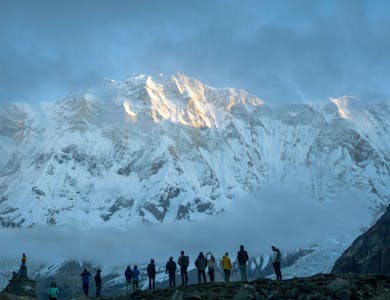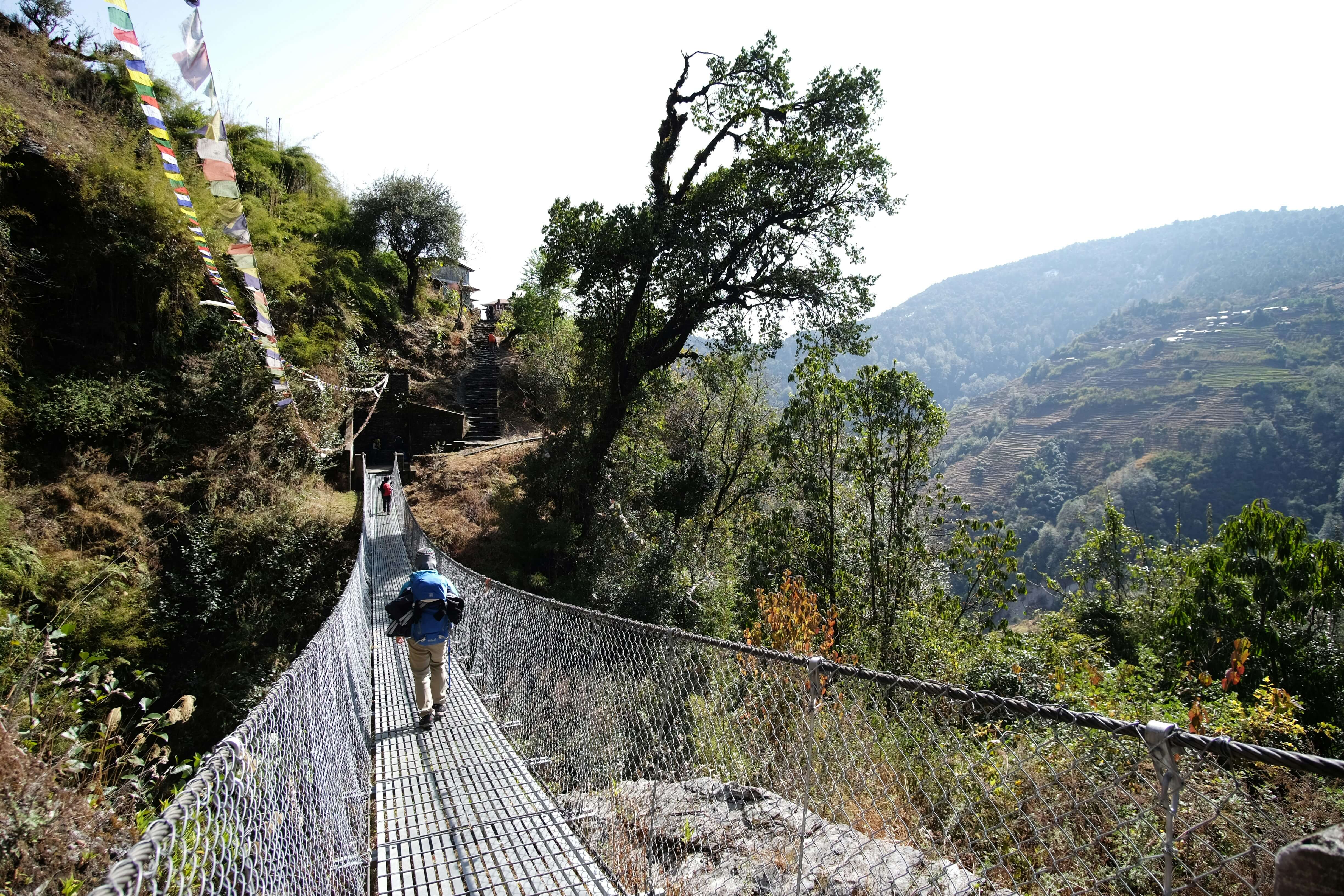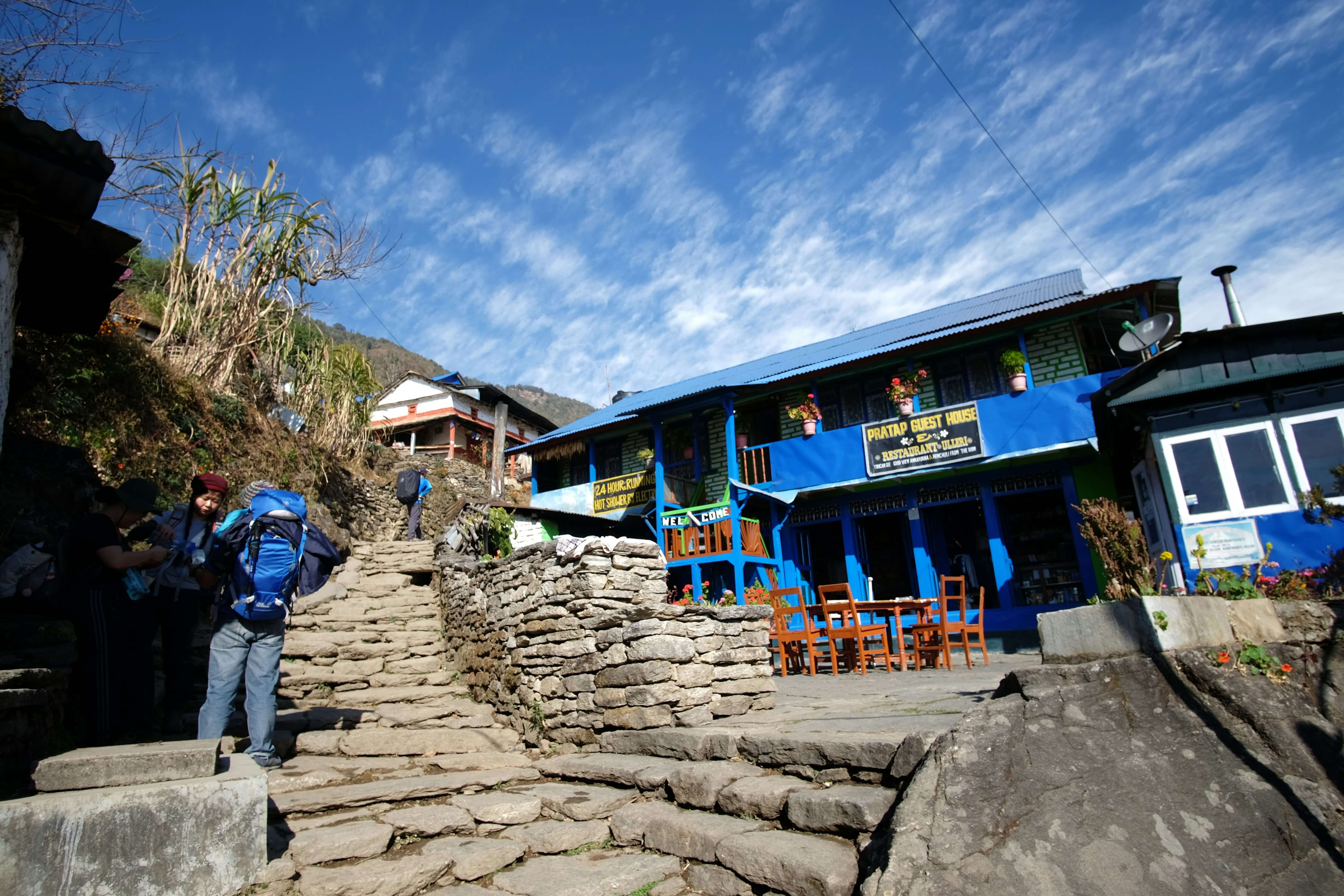How to Train for the Annapurna Treks: Circuit, Base Camp & Sanctuary
Discover how to train for the Annapurna Circuit, Annapurna Base Camp, and Annapurna Sanctuary treks

Introduction
The Annapurna region of Nepal is a dream destination for trekkers worldwide — a place where rice terraces give way to alpine meadows, prayer flags flutter in crisp mountain air, and colossal peaks tower overhead. Whether you’re planning to walk the Annapurna Circuit, trek to Annapurna Base Camp (ABC), or explore the Annapurna Sanctuary, one thing is certain: preparation is everything.
These are challenging, high-altitude routes — but with the right training and mindset, they’re also life-changing. This guide explains how to prepare physically and mentally for your trek, what to expect at different altitudes, how to prevent altitude sickness, and the best time of year to go.
🥾 Understanding the Annapurna Treks
Annapurna Circuit
Duration: 14–20 days
Max altitude: 5,416m at Thorong La Pass
Highlights: Crossing one of the world’s highest passes, remote villages, and the dramatic transition from jungle valleys to high-altitude desert.
Difficulty: Challenging – long daily distances, altitude exposure, and steep descents.
Annapurna Base Camp (ABC) Trek
Duration: 7–11 days
Max altitude: 4,130m at Base Camp
Highlights: Trek through lush forests and terraced farmlands to reach the majestic amphitheatre of the Annapurna Sanctuary, surrounded by 7,000–8,000m peaks.
Difficulty: Moderate to challenging – shorter than the Circuit but with steady, steep climbs.
Annapurna Sanctuary Trek
Duration: 10–12 days
Max altitude: 4,130m
Highlights: A broader exploration of the sanctuary region with cultural villages, diverse landscapes, and close-up views of Machapuchare (Fishtail Mountain).
Difficulty: Moderate – less altitude exposure than the Circuit, ideal for first-time Himalayan trekkers.
🌄 Altitude and Acclimatisation
The higher you go, the thinner the air becomes — and that’s where the challenge lies. The human body needs time to adjust to reduced oxygen levels.
Below 3,000m: Most people feel fine.
3,000–4,000m: Mild symptoms like fatigue or headaches may appear.
4,000–5,500m: Risk of Acute Mountain Sickness (AMS) increases.
Common Symptoms of AMS
Headache
Loss of appetite
Nausea or vomiting
Dizziness or difficulty sleeping
If symptoms persist or worsen, descend immediately and rest. Fitness doesn’t prevent AMS — acclimatisation does.
Top Tips for Preventing Altitude Sickness:
Trek “bistari bistari” — slowly, slowly.
Drink 3–4 litres of water daily.
Avoid alcohol while ascending.
Spend acclimatisation days (especially in Manang on the Circuit) hiking higher but sleeping lower.
Consider speaking with your GP about Diamox (acetazolamide), a preventative medication.

💪 12-Week Training Plan for the Annapurna Treks
No matter which route you choose, consistent preparation will make the trek far more enjoyable. You’ll be walking 5–8 hours a day, often on steep terrain — so your body must be ready for endurance, not just fitness.
Weeks 1–4: Build Your Aerobic Base
Goal: Establish fitness consistency and improve cardiovascular capacity.
Plan:
Hike or walk 3–4 days per week (60–90 mins each).
Add stair climbs or hills to mimic Himalayan terrain.
Include 2 cardio sessions per week (cycling, swimming, or jogging).
Do 2 strength sessions focusing on legs and core (lunges, squats, step-ups, planks).
Take one long weekend hike of 3–4 hours with a 5kg pack.
Pro tip: Break in your trekking boots early — blisters are easier to prevent than cure.
Weeks 5–8: Build Strength and Endurance
Goal: Strengthen your lower body and adapt to long, consecutive trekking days.
Plan:
Hike or brisk walk 3 times weekly (1–2 hours).
Long weekend hike (5–6 hours) with 6–8kg pack.
Continue strength training twice per week with added weights.
Add hill training or stair intervals once per week.
Add yoga or Pilates to improve balance and flexibility.
Pro tip: On weekends, do back-to-back hikes to simulate real trekking fatigue.
Weeks 9–12: Peak Conditioning and Trek Simulation
Goal: Prepare your body for multi-day effort with a full pack.
Plan:
One long hike (6–8 hours) each week with 8–10kg pack.
Continue 2 cardio sessions weekly (including one interval workout).
Maintain 1–2 strength sessions focusing on legs and mobility.
Prioritise rest, nutrition, and hydration.
Pro tip: Use these weeks to test all your gear — boots, backpack, poles, and layers.
🏃 How to Train for Altitude Without Mountains
If you live at sea level, you can still prepare effectively:
Focus on cardiovascular endurance — longer, steady workouts improve oxygen efficiency.
Use stair climbs or treadmill inclines to mimic ascents.
Practice nasal breathing and controlled pace hiking.
Include high-repetition strength circuits to train muscle endurance.
If possible, plan one weekend of training at altitude (in the Alps, Pyrenees, or Scottish Highlands) before you go.

🥗 Nutrition and Hydration Tips
Fuel your training like a trekker:
Eat for endurance — slow-release carbs (oats, brown rice, lentils) and lean proteins.
Stay hydrated and limit caffeine during long sessions.
During the trek, eat regular meals (dal bhat, noodles, soups) and snacks.
Carry electrolyte sachets for hydration at altitude.
Your diet on the trail will be mostly plant-based and carb-heavy — perfect for maintaining energy over long days.
🕐 Best Time to Trek in the Annapurna Region
Weather can make or break a trek. The best time depends on your goals, route, and tolerance for cold or crowds.
Spring (March–May)
Pros: Lush forests, rhododendrons in bloom, warm days.
Cons: Occasional haze.
Best for: Annapurna Base Camp and Sanctuary treks.
Autumn (October–November)
Pros: Stable weather, crisp mountain views, comfortable temperatures.
Cons: Busy trails.
Best for: All Annapurna routes, especially the Circuit (snow-free Thorong La).
Winter (December–February)
Pros: Quiet trails, clear skies.
Cons: Very cold above 3,500m; Thorong La may close due to snow.
Best for: Lower-altitude treks such as the Sanctuary route.
Monsoon (June–September)
Pros: Lush green scenery, few tourists.
Cons: Heavy rain, leeches, limited views.
Best avoided, unless trekking in rain-shadow regions like Upper Mustang.
🧘 Mental Preparation
Trekking in Nepal isn’t a race; it’s a rhythm. You’ll climb, descend, and repeat — often for hours — through sun, wind, and snow. Your mental resilience is what gets you over the pass or up to base camp when your legs are tired.
Mental Tips:
Focus on the journey, not just the summit.
Trek mindfully — enjoy the sounds, the scenery, and the culture.
Celebrate progress daily, not just the finish line.
Remember the Nepali phrase: “Bistari bistari” — slowly, slowly.
🧭 Final Thoughts
Trekking in the Annapurna region is one of life’s great adventures — a test of endurance, patience, and spirit. The rewards are immense: the sunrise over Annapurna I, the flutter of prayer flags at Thorong La, and the camaraderie of the trail.
With consistent training, a calm pace, and respect for the mountains, you’ll not only complete the trek — you’ll savour every step of it.




